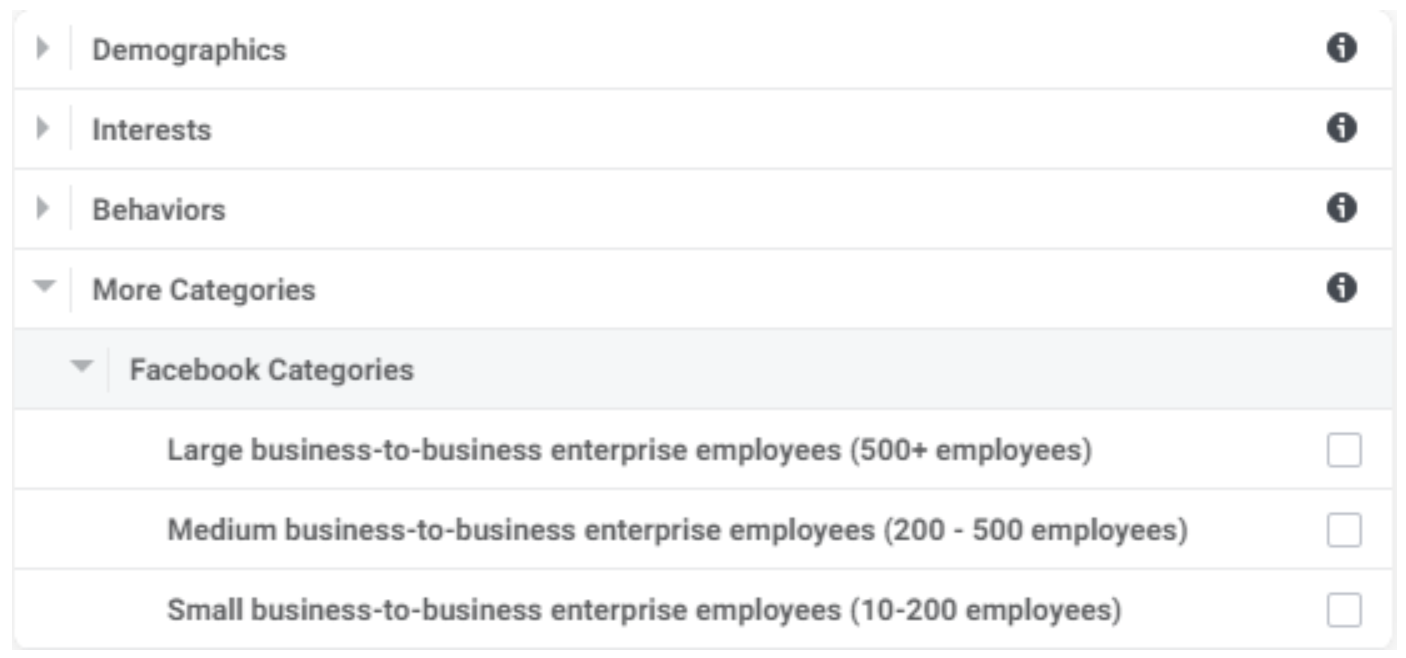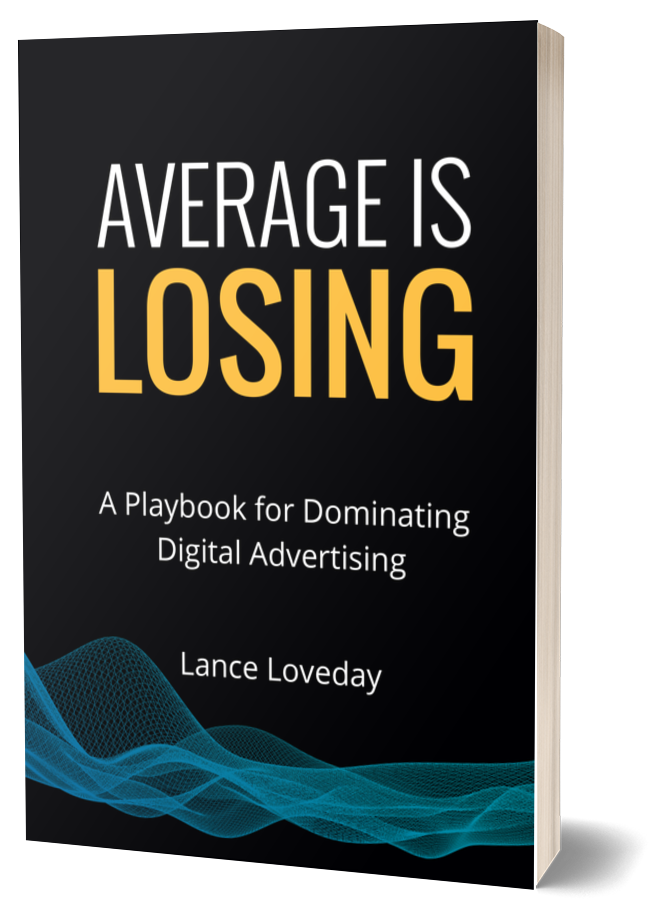This post originally appeared on Search Engine Journal
I’ve worked with many B2B on-demand generation programs using social media advertising and am always surprised at how B2B targeting on Facebook is underutilized, misunderstood, and overlooked.
Objections typically include:
While these criticisms are reasonable, platform knowledge, audience targeting, and campaign execution are often the culprits behind those problems.
Here’s what you need to know to use B2B targeting on Facebook to your advantage.
Effective B2B targeting on Facebook starts with understanding the fundamental difference between Facebook and the preeminent B2B social platform – LinkedIn.
B2B success on Facebook requires a shift in your thinking and tactics, especially if you’re used to running LinkedIn campaigns.
The change boils down to four key differences:
With this better understanding of the core differences between Facebook and LinkedIn, the next step is to develop target audiences to capitalize on Facebook’s strengths.
This is where things may start to get outside of the traditional comfort zone of many B2B advertising managers who are used to the tight targeting and craftsmanlike nature of LinkedIn audiences.
To ease any potential anxiety, here are audience recommendations from the “safest” to the most aggressive.
Want to know a little-known secret for B2B marketers? Facebook has a few targeting segments available for whitelisting.
Located in the Detailed Targeting section under “More Categories,” these audiences comprise Facebook-identified employees of B2B companies of various sizes ranging from 10-200, 20-500, and 500+.
Instead of bothering with Facebook’s not-so-great job title and company targeting, this makes an excellent large seed audience.

In addition, you’ll be able to quickly narrow your targeting and include additional interests to help focus on a specific vertical or subject matter expertise.
For example, targeting the medium and large B2B employee segments and layering on Information Technology and Management interests will likely get you a targeted audience of IT decision-makers.
Facebook’s ability to create relevant lookalike audiences (LAL) also gives it a competitive advantage, and value-based lookalikes are just icing on the cake.
Uploading a list of leads converted to customers, including the lifetime value (LTV) of those leads, and creating a customer value custom audience helps you not only find new potential converters based on your existing data but can also determine value to maximize profitability.
Once you’ve created your customer value custom audience, create a lookalike based on that audience as a source. I always recommend a 1% and a 3% lookalike to test quality and quantity.
In theory, the 1% lookalike audience will be the most similar and most likely to convert with a lower cost per lead (CPL). The 3% LAL loses a little of the targeting fidelity of the 1%, but its size improves efficiency.
Similar to the B2B Enterprise Employee categories above, these LTV lookalikes make great seed audiences in which you can add additional interests to create more targeted segments.
If you’re looking for additional audience granularity or need to focus on specific audiences not available through the broader target audiences listed above, third-party solutions are effective.
Sure, the good old days of “Partner Categories” may be over, but that doesn’t mean you can’t get access to hyper-targeted segments from providers outside of Facebook.
You just need to know where to look. Here are two platforms to consider:
Oracle Data Cloud
Clearbit
If you’re looking to give Facebook a try (or another try) for your B2B marketing efforts, here are some overarching strategy imperatives that should help maximize your potential for success:
With its lower CPMs and larger audience sizes, Facebook is an efficient channel for awareness and consideration stage marketing.
Resist the temptation to go right in for a low-funnel conversion like a demo or trial offer, especially with a cold prospecting audience.
Warm your audience up with a video or capture their info with gated content, and then go for the sale.
If it has larger audiences to experiment with, Facebook is better at optimizing campaigns and finding efficiencies. Always focus on the volume of conversions on Facebook first.
Then, explore ways to improve quality when you’re getting conversions on your offers.
In addition to Facebook Lead Generation forms typically driving better conversion rates than driving traffic to your website, they have another huge advantage these days – iOS 14.
With pixel tracking on Apple devices slowly becoming a thing of the past, Facebook-centric conversions like Lead Forms and Messenger chats are comparatively immune to any tracking and gaps, ensuring the most accurate performance data. Plus, they can be synced directly to your CRM.
A common complaint about Facebook-driven B2B leads is that they are of insufficient quality. This can be especially true of B2B marketers looking for “up-market” leads at larger, enterprise-level companies.
One solution to this problem is the implementation of the Facebook Conversions API.
Doing so allows users to sync backend data with the Facebook platform to not only have tracking visibility into KPIs like marketing qualified lead (MQL), Closed Won, and so forth but also provides the ability to optimize your campaigns to those KPIs.
This is a powerful tool that allows you to bypass the pixel event entirely. Rather than optimizing your campaign to a form fill and hoping those form fill leads convert to MQLs, you can use the MQL data you collect to better inform targeting on the front-end and optimize campaigns to the events you me
Now, with iOS 14 all but neutralizing our ability to track mobile pixel conversions for Apple devices anyway, API-based events would be a game-changer for any advertiser looking to better tie their investment to the KPIs that drive your business.
Facebook is not LinkedIn. A successful B2B marketer on Facebook plays to the platform’s strengths and understands how to use the tool effectively.
To get the most out of Facebook for your B2B marketing, follow these steps.
Successful B2B targeting on Facebook requires patience, savviness, and having the right tactics and audiences.
By capitalizing on the low CPMs and highly accurate conversion optimization technology Facebook has to offer, you’ll drive outstanding results for your B2B business in a place not always known for it.
My new book, “Average is Losing” is finally here! I created this playbook to help savvy advertisers close the gap between winning and run-of-the-mill paid advertising campaigns.
It’s filled to the brim with the latest strategies, tactics and tips our Closed Loop experts use to help our clients seek exponential growth.
Are you ready to rise above average campaign performance? Start your business on the path to PPC domination today!
– Lance Loveday
